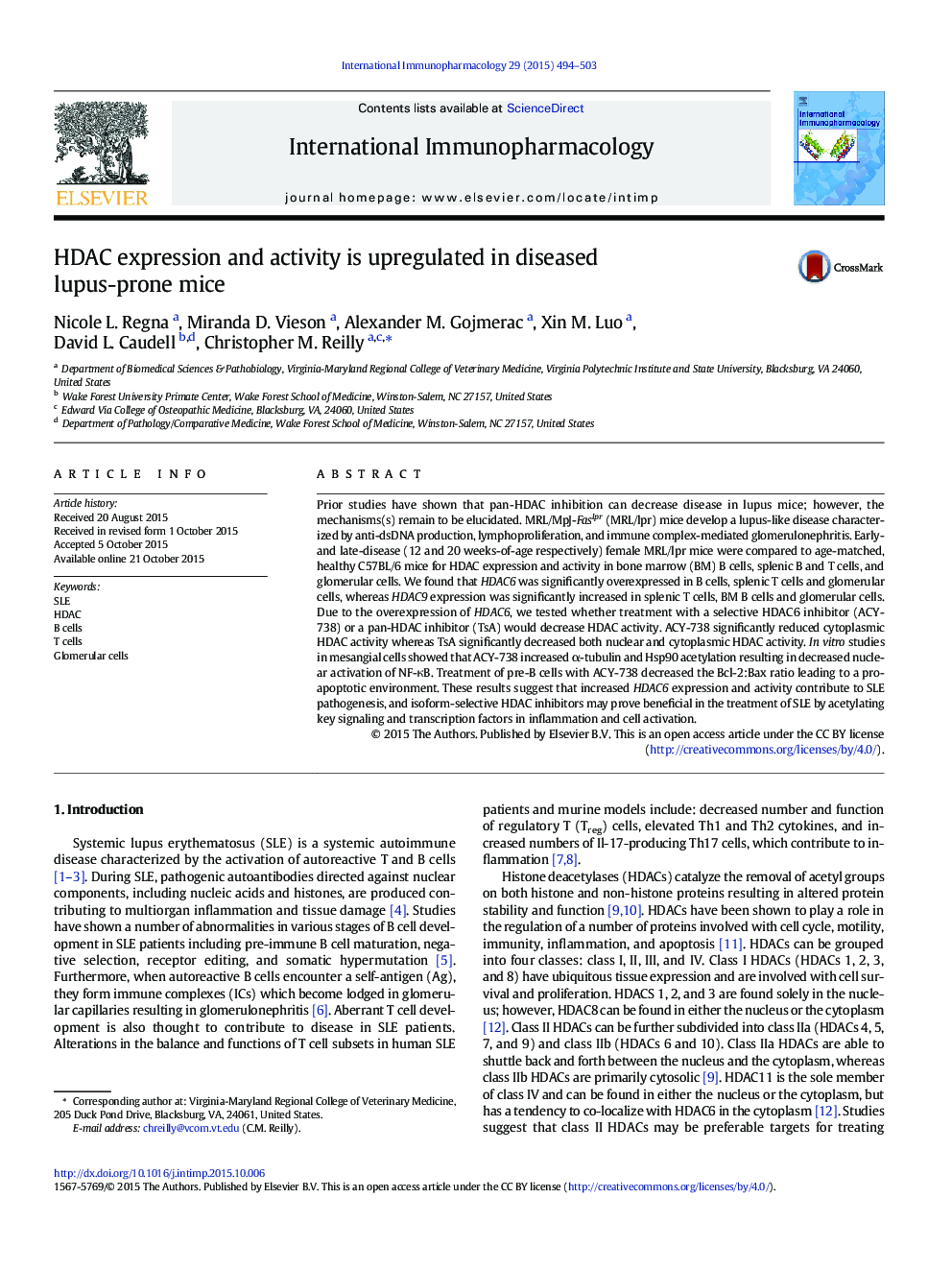| Article ID | Journal | Published Year | Pages | File Type |
|---|---|---|---|---|
| 5832179 | International Immunopharmacology | 2015 | 10 Pages |
â¢HDAC6 expression is increased in lupus mice T cells and B cells.â¢Selective HDAC6 inhibitor decreased cytoplasmic HDAC activity.â¢HDAC6 inhibition decreases Bcl-2:Bax ratio.
Prior studies have shown that pan-HDAC inhibition can decrease disease in lupus mice; however, the mechanisms(s) remain to be elucidated. MRL/MpJ-Faslpr (MRL/lpr) mice develop a lupus-like disease characterized by anti-dsDNA production, lymphoproliferation, and immune complex-mediated glomerulonephritis. Early- and late-disease (12 and 20 weeks-of-age respectively) female MRL/lpr mice were compared to age-matched, healthy C57BL/6 mice for HDAC expression and activity in bone marrow (BM) B cells, splenic B and T cells, and glomerular cells. We found that HDAC6 was significantly overexpressed in B cells, splenic T cells and glomerular cells, whereas HDAC9 expression was significantly increased in splenic T cells, BM B cells and glomerular cells. Due to the overexpression of HDAC6, we tested whether treatment with a selective HDAC6 inhibitor (ACY-738) or a pan-HDAC inhibitor (TsA) would decrease HDAC activity. ACY-738 significantly reduced cytoplasmic HDAC activity whereas TsA significantly decreased both nuclear and cytoplasmic HDAC activity. In vitro studies in mesangial cells showed that ACY-738 increased α-tubulin and Hsp90 acetylation resulting in decreased nuclear activation of NF-κB. Treatment of pre-B cells with ACY-738 decreased the Bcl-2:Bax ratio leading to a pro-apoptotic environment. These results suggest that increased HDAC6 expression and activity contribute to SLE pathogenesis, and isoform-selective HDAC inhibitors may prove beneficial in the treatment of SLE by acetylating key signaling and transcription factors in inflammation and cell activation.
